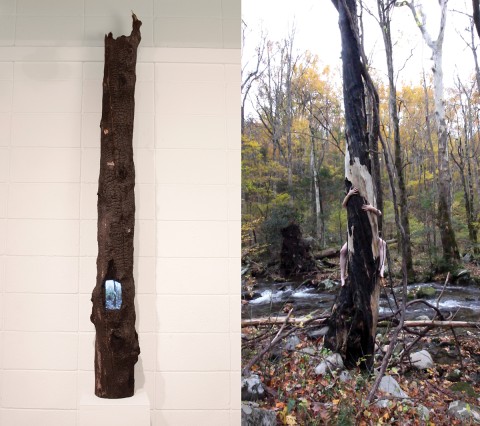Sublunary Embrace, by Alyssa Coffin

One morning this autumn my brother woke to ash falling from the sky outside his window in Montana. He leapt out of bed, worried that his apartment building was on fire. It wasn’t. But the eerie haze and the woodsy scent that clung to it made the forest fires raging miles away feel disconcertingly close. Thousands of people were not so fortunate, as flames roared through vast regions of the American West, sometimes devouring entire towns.
It is hard not to read Alyssa Coffin’s Sublunary Embrace—created in Gatlinburg, Tennessee, gutted by fires in 2016—in light of the catastrophes sparked by climate change. She clings to a tree whose bark, charred by the passing fires, has peeled away in the spiral pattern of a Solomonic column. Is she protecting the tree or mourning it? Her limbs are almost camouflaged against its bare, stripped trunk, united in vulnerability. A video of this scene is framed by the hollow, charred trunk of another fallen tree, pinned to the gallery wall. For all these reminders of tragedy, there is something hopeful in this pairing, as if the artist has tapped some residual life force, secreted away in the wood. It would be too simple to say that Coffin’s video sculpture promises rebirth or resurrection. But there is a strange comfort in its intimation that change and motion, as Aristotle suggested, are unavoidable in our sublunary world. We must somehow embrace this world as it is, as it has become.




